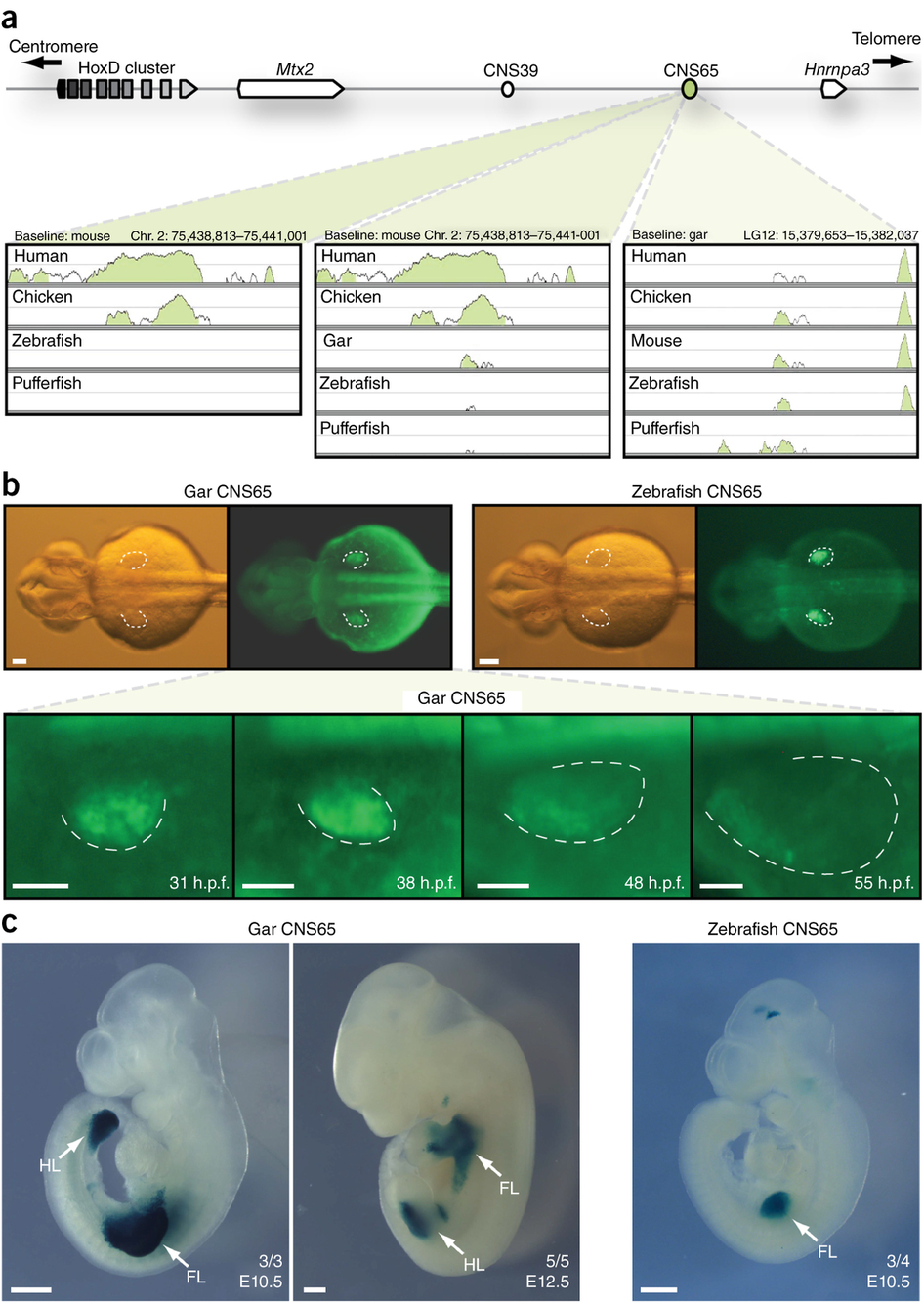Fig. 5
Identification and functional analysis of the gar and teleost early-phase HoxD enhancer CNS65.
(a) Top, schematic of the mouse HoxD telomeric gene desert, which contains the CNS39 and CNS65 enhancers that drive early-phase HoxD expression in limbs. Using mouse as the baseline, VISTA alignments of the HoxD gene desert show sequence conservation with human and chicken for CNS65 but not with teleosts (zebrafish and pufferfish) (bottom left). An alignment including gar, however, shows a peak of conservation in the gar sequence (middle). Using the identified gar CNS65 as the baseline identified CNS65 orthologs in zebrafish and pufferfish (right). (b) Gar (left) and zebrafish (right) CNS65 orthologs drive robust and reproducible GFP expression in zebrafish pectoral fins at 36 hours post-fertilization (h.p.f.) (top). Gar CNS65 has pectoral fin activity beginning at 31 h.p.f., which drives GFP expression throughout the fin, and becomes deactivated around 48 h.p.f. (bottom). Dashed lines indicate the distal portion of the pectoral fins. (c) Gar CNS65 drives expression throughout the early mouse forelimbs and hindlimbs (arrows) at stage E10.5 (left). At later stages (E12.5), gar CNS65 activity is restricted to the proximal portion of the limb and is absent in developing digits (middle). Zebrafish CNS65 drives reporter expression in developing mouse limbs at E10.5 but only in forelimbs (right). The number of LacZ-positive embryos showing limb signal is indicated at the bottom right of each image; FL, forelimb, HL, hindlimb. Scale bars, 50 μm (b) and 500 μm (c). See also the Supplementary Note.

